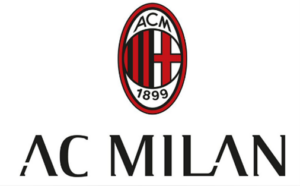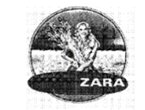We surely cannot.
With Messi (see cases C-449/18P and C-474/18P MESSI) and Miley Cyrus (case T‑368/20 MILEY CYRUS), we learnt that reputation or renown of (personal) names is a factor which should be taken in consideration when comparing marks and which may ultimately exclude confusion with an earlier similar mark. However, two recent cases seem to indicate that a different standard applies for (corporate) names. Why is anyone’s guess.
The first case T-353/20, decided on 10 November 2021, concerns Associazione Calcio Milan Spa (AC MILAN), one of the most famous football clubs in Europe and perhaps in the world, which filed an EUTM application for the following figurative mark in Class 16.

InterES Handels- und Dienstleistungs Gesellschaft mbH & Co. KG successfully opposed this application on the basis of its German registration MILAN (word mark) in class 16. Also the EUIPO Board of Appeal confirmed that there was a likelihood of confusion. AC Milan thus turned to the General Court (GC).
AC MILAN argued that due to the high reputation of the mark applied for, the two signs should have been considered conceptually different, as the relevant public would undoubtedly associate the name AC MILAN with the famous football club (cf. at §109). However, the GC applied two earlier cases (Aceites del Sur-Coosur, C‑498/07 P and YATEKOMO, T‑336/17), and held that, only the reputation of the earlier mark, and not that of the trademark applied for, must be taken into consideration in the assessment of the likelihood of confusion (see at §113).
The second case, T‑467/20 decided on 01 December 2021, concerns Industria de Diseño Textil, SA (INDITEX), owner of the ZARA trademark used and well known in Europe for hundreds of clothing shops, which filed an EUTM application for the word mark ZARA in Classes 29 to 32, 35 and 43. Ffauf Italia SpA successfully opposed this on the basis of earlier rights, including an EUTM registration for LE DELIZIE ZARA in class 29 and 30 and an Italian figurative mark in class 29 shown here below. Again, the Board of Appeal confirmed the finding of likelihood of confusion and Inditex brought the case to the GC

Inditex argued that consumers would associate ZARA with the name of the famous retailer specialized in fast fashion, and that therefore, the conceptual difference with the earlier marks counteracted the visual and phonetic similarities. However, also in this case, the GC stated that the reputation of the contested mark was irrelevant, and that reputation was relevant only in respect of the earlier mark (§ 145).
There is little doubt that the AC MILAN name and team probably rivals Lionel Messi in renown in the area of football. Also ZARA’s renown in the fashion world likely outclasses the (arguable) renown of Miley Cyrus. The double standard therefore appears inexplicable as the only difference between MESSI and MILEY CYRUS on the one hand and AC MILAN and ZARA on the other is not the degree of fame, but rather that the latter two are not celebrities’ (personal) names. However, the reasons why the reputation of the contested mark should be relevant in case of celebrities, but not in case of companies’ names (be they a soccer team or a store chain) are unfathomable.
In MILEY CYRUS, the GC clearly held (at § 60) that “conceptual differences may counteract, in certain circumstances, phonetic and visual similarities between the signs in question. In order for there to be such a counteraction, at least one of the signs in question must have, from the point of view of the relevant public, a clear and specific meaning, so that that public is capable of grasping it immediately”. There is neither factual nor legal justification to limit the applicability of this principle only to celebrities’ names. What matters should not be the “kind” of sign (celebrity vs. corporate/business name), but rather whether the public is capable of grasping a clear and specific meaning immediately, so as to counteract phonetic and visual similarities between the signs in question.
So, we wonder…. might this matter be one that is “significant with respect to the unity, consistency or development of EU law”?
_____________________________
To make sure you do not miss out on regular updates from the Kluwer Trademark Blog, please subscribe here.



The fact that a first name was included is one of the things that sets this choice apart from prior ones. Unlike the MASSI and Ruiz-Picasso cases, which concerned some (extremely famous) last names, this case demonstrated that the conclusions in such judgements might be extended to marks covering celebrities’ first and surnames, depending on the specifics of the case.
It appears that the link between reputation and the likelihood of being confused has now been clarified. Rather than being interpreted in the meaning of Articles 8(5) and 9(2)(c) EUTMR, a celebrity’s reputation could contribute to the conclusion that their name has become a symbol of a notion. However, the point at which conceptual differences can be identified to offset phonetic and visual similarities is still unknown – everyone knows Miley Cyrus, but what about lesser-known celebrity names, for example? The point at which such retaliation becomes necessary will be determined by decision-making practice and prospective case law…